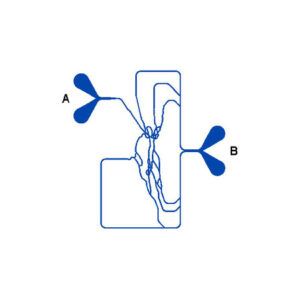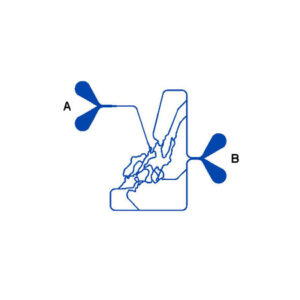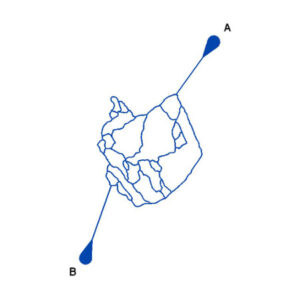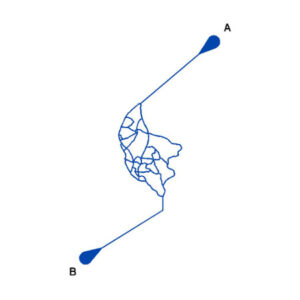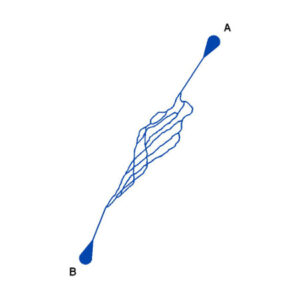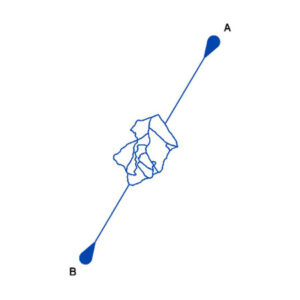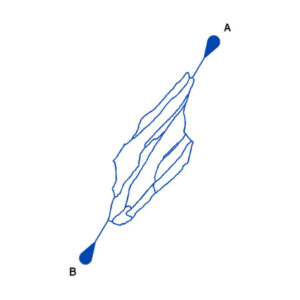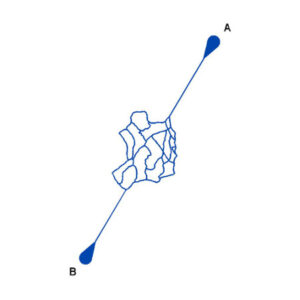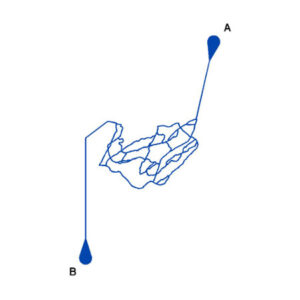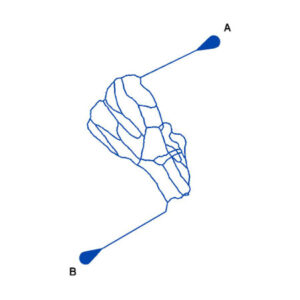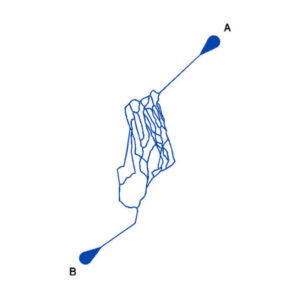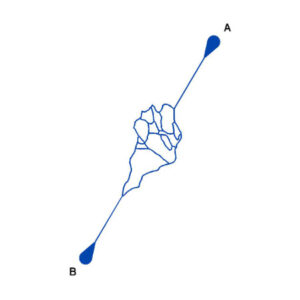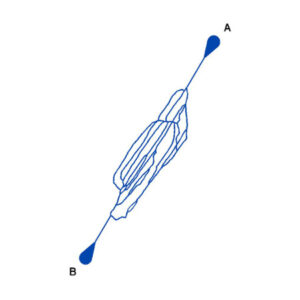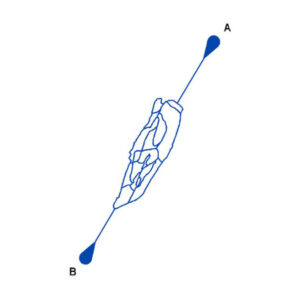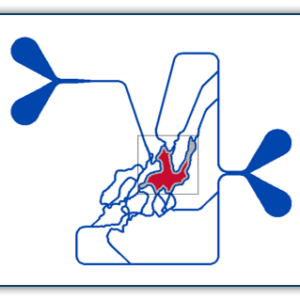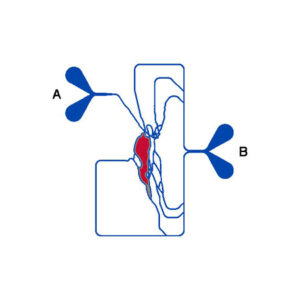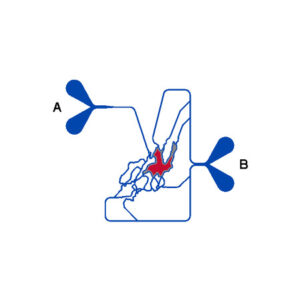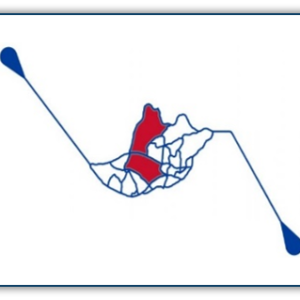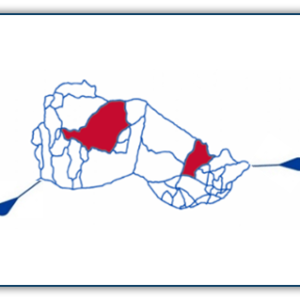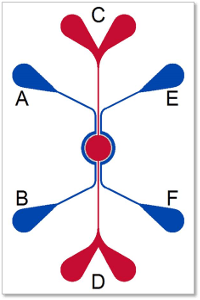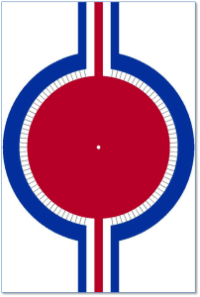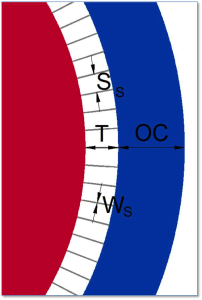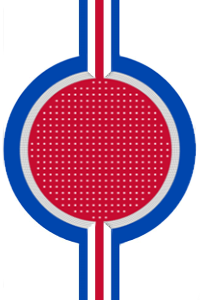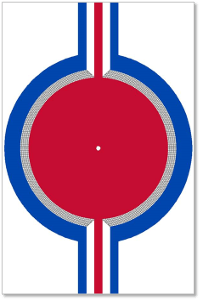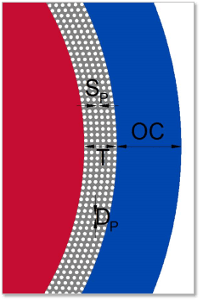SynVivo is a cell-based microfluidic platform that enables shorter and more successful drug development by combining the efficiency and control of in vitro testing with the realism and validation of in vivo studies. Microfluidic chips of various designs from simple linear to complex microvascular network designs are available as standard stock items. We can also produce custom designs based on your research applications.
The SynVivo platform can support custom assays based on your research application. Don’t see a catalog assay for your biological question? Want to perform your assay using a linear chip design? We can develop a custom assay kit for you using our library of chip designs- See more information in the following tabs.
- Linear Channels
- Bifurcating Channels
- Microvascular Networks
- Idealized Networks
Custom Designs – If you need a specialized microvasulature or other design we have the necessary equipment to fabricate most any design based on your research needs. Our engineers will work with you to help design the most relevant SynVivo channel or network configuration to help you achieve your research goals.
Linear Channels Design Library
Three channels per chip of various widths to allow you to study shear effects based on channel size and flow rates. Use Linear Channels for studying cell/particle adhesion and cell-cell or cell-particle interactions at the micro-circulation scale. Use as a substitute for parallel plate flow chambers for >90% savings in consumables.
Standard Width Options (W1 / W2 / W3):
- 100 μm / 100 μm / 100 μm
- 250 μm / 250 μm / 250 μm
- 500 μm / 500 μm / 500 μm
- 100 μm / 250 μm / 500 μm
Custom designs/sizes also available.
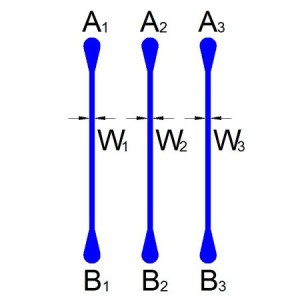
CAT# | Product Name | Price |
|---|---|---|
101001-3 | ||
101002-3 | ||
101003-3 | ||
101004-3 |
Bifurcating Channels Design Library
With various options of symmetric and asymmetric bifurcating angles and parent/daughter channel widths, you can likely find a set of designs to provide you the best models for your research. Use symmetric and asymmetric bifurcations to study cell/particle adhesion and cell-cell or cell-particle interactions at bifurcations and to study the effect of the bifurcation angle and asymmetry on adhesion. Compare adhesion in linear sections and bifurcations simultaneously.
Standard Symmetric Bifurcation Angle (θB/θC) Options:
- 15° + 15°
- 30° + 30°
- 45° + 45°
- 60° + 60°
Custom designs/sizes also available.
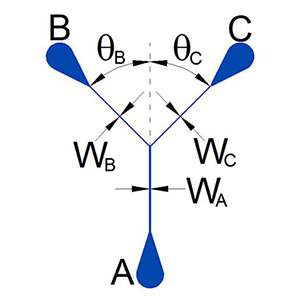
CAT# | Product Name | Price |
|---|---|---|
101005-3 | ||
101006-3 | ||
101007-3 | ||
101008-3 | ||
101009-3 |
Microvascular Network Design Library
Use Microvascular Networks to replicate in vivo cell/particle adhesion and cell-cell or cell-particle interactions in an in vitro setting. Investigate the effects of flow and morphology for drug delivery, drug discovery, and cellular behavior. Obtain shear-adhesion maps and bifurcation vs. branch adhesion in a single experiment.
Co-Culture Network Design Library
Use network co-culture assays to replicate the in vivo physiological and morphological conditions in addition to desired cellular makeup. By incorporating natural tissue regions within the network topology, the co-culture networks allow the study of cell and drug behavior at and across the interfaces. The co-culture network constructs are available with several options for channel size, tissue region scaffolding, and barrier design. We can help you select the right parameters for your needs and can also construct custom designs if needed.
Multi-Chambered Chips
Multi-chambered chips are for studying the effect of high and low perfusion. Use these chips for studies of tumor microenvironment based on differential flow gradients and metastasis.
Tandem Co-Culture Chips
Tandem-co-culture chips are used for real-time visualization and quantitation of tumor metastasis. Tandem chips are designed with synthetic tumor networks comprising primary and secondary tumor sites. This chip has been used to develop a 3D vascularized model for monitoring the invasive growth patterns and metastatic potential of tumors, thereby mimicking both the in vivo microenvironment of solid tumors, cancer invasion, and metastasis. This model can be used to investigate tumor-endothelial cell interactions using a combination of real-time imaging techniques and screening of targeted therapeutics that may reduce the metastatic potential of tumors.
Co-Culture Design Library
Use idealized co-culture assays to mimic the cellular make up in vivo. Investigate cell-cell interactions and perfusion vs. diffusion-based effects. Analyze the experiments in real-time for all the cell populations. Intended to mimic the formation of and transport across tight and gap junctions such as the blood-brain barrier and other endothelial/tissue interfaces, the idealized co-culture constructs are available with several options for channel size, tissue chamber size and scaffolding, and barrier design. We can help you select the right parameters for your needs and can also construct custom designs if needed. Please contact us for details.
Slit Barrier or Pillar Barrier Options
Slit Barriers: This device utilizes slits spaced at regular intervals to form the barrier region between the outer and inner chambers.
Standard design parameters available are:
- Outer Channel Width (OC): 100 μm or 200 μm
- Travel Width (T): 50 μm or 100 μm
- Slit Spacing (SS): 50 μm or 100 μm
- Slit Width (WS): Variable
Radial IMN2/IMN3 Slit Options
Pillar Barrier Options
These devices utilize pillars to form the barrier region between the outer and inner chambers.
Standard design parameters available are:
- Outer Channel Width (OC): 100μm or 200μm
- Travel Width (T): 50 μm or 100μm
- Pillar Spacing (Gap) (SP): 8μm or 3μm
- Pillar Diameter (DP): Variable
- Pore sizes available 3μm or 8μm
Radial IMN2/IMN3 Pillar Option
CAT# | Product Name | Price |
|---|---|---|
108007-STu3 | ||
108011-STu3 | ||
108011-SB3 | ||
108013-STo3 | ||
103002-3 | ||
103003-3 | ||
103004-3 | ||
103006-3 | ||
103007-3 |
